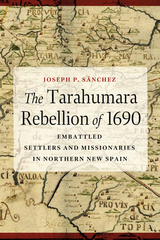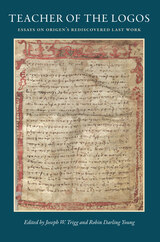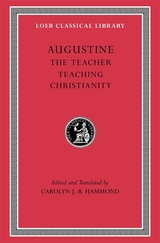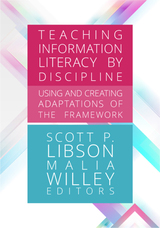
The Compelling Image will delight the art-lover who does not yet realize that Chinese painting can be as original and moving as El Greco or Cézanne. With a graceful authority, James Cahill explores the radiant painting of that tumultuous era when the collapse of the Ming Dynasty and the Manchu conquest of China dramatically changed the lives and thinking of artists and intellectuals.
The brilliant masters of the seventeenth century were reconsidering their artistic relationship to nature and to the painting of earlier times, while European pictorial arts introduced by Jesuit missionaries were profoundly influencing Chinese techniques. The reader/viewer is presented with a series of crucial distinctions of style and approach in a richly illustrated book that illuminates the whole character of Chinese painting.
Cahill begins with a relatively neglected artist, Chang Hung, who moved traditional forms ever closer to literal descriptions of nature, in contrast with the theorist painter Tung Ch’i-ch’ang, who turned the same traditional forms into powerful abstractions. A chapter focused on Wu Pin offers new and controversial ideas about the impact of European art, as well as a related phenomenon: revival of the highly descriptive early Sung styles. Looking especially at Ch’en Hung-shou, the greatest of the late Ming figure painters, Cahill examines a curious mixing of real people and conventionally rendered surroundings in portrait art of the period. He analyzes the expressionist experiments of the masters known as Individualists, and distinguishes these artists from the Orthodox school, concluding with a bold reassessment of the most eloquent of later Chinese painters, Tao-chi.
Over 250 illustrations, including twelve color plates, are drawn from collections in the United States, Europe, Japan, and China. This is a book for anyone interested in China, its past, and its art, and for the enthusiast who wishes to broaden the horizons of enjoyment by exposure to a most engaging writer on an exquisite era.

For 1,300 years, Chinese calligraphy was based on the elegant art of Wang Xizhi (A.D. 303–361). But the seventeenth-century emergence of a style modeled on the rough, broken epigraphs of ancient bronzes and stone artifacts brought a revolution in calligraphic taste. By the eighteenth century, this led to the formation of the stele school of calligraphy, which continues to shape Chinese calligraphy today.
A dominant force in this school was the eminent calligrapher and art theorist Fu Shan (1607–1685). Because his work spans the late Ming–early Qing divide, it is an ideal prism through which to view the transformation in calligraphy.
Rather than seek a single explanation for the change in calligraphic taste, the author demonstrates and analyzes the heterogeneity of the cultural, social, and political processes behind it. Among other subjects, the book covers the late Ming interaction between high and low culture; the role of publishing; the Ming loyalist response to the Qing; and early Qing changes in intellectual discourse. In addition to the usual approach of art historians, it adopts the theoretical perspectives of such fields as material culture, print culture, and social and intellectual history.
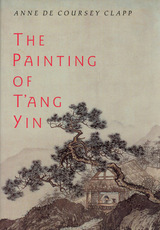
Anne De Coursey Clapp's work also explores larger issues of Ming painting raised by the artist's turbulent career. She describes the social and intellectual values exalted in Ming Suchou, its system of patronage, the contrast between the professional and amateur artist, and the formative influence of twelfth-century Sung dynasty styles on Suchou painters. Clapp shows how T'ang Yin's artistic inventions were made in the course of leading the revival of Sung dynasty styles in Suchou: tracing T'ang Yin's early studies of ancient and contemporary masters, she describes how he reworked an antique style, converting it into a vehicle of expression that reached fruition in a long series of fresh and powerful paintings of landscapes and birds-and-flowers. In the process, she revises the distorted version of middle Ming painting written by later Chinese art theorists to justify their own social and artistic values, noting especially the role of art patrons and their effect on artistic production.
Clapp analyzes the increasing currency of painting as a means of social exchange in ancient China. In particular, she identifies commemorative painting as a major genre of the later dynasties and explores the role it played in the oeuvres of professional masters with its humanistic implications for the Chinese view of the ideal scholarly man. Her broad view of T'ang Yin's career shows him divided between the professional and amateur camps of his time: in landscape and figural subjects he was aligned with the professionals; in flower subjects with the amateurs. Clap argues that the uneven distribution of styles and genres between this master who was subject to the market, and those who were independent of it, suggests that T'ang deliberately tried to expand the range of his paintings in order to appeal to buyers in the lower educational and social strata. Illustrated by some of T'ang Yin's most celebrated paintings and by some which are published for the first time, her work is of tremendous importance to art, literary, and cultural historians of Ming China.
"In this important work, Anne de Coursey Clapp has drawn a clear picture of T'ang Yin's life, patronage relationships, and contribution to the history of Chinese painting. In the person of T'ang Yin, she has chosen an ideal focus around which to examine some of the misleading stereotypes
which have distorted our understanding of Chinese painting since the seventeenth century. Marked by analytical clarity and scrupulous scholarship, her work is a welcome addition to the few works in English on individual Chinese artists."—Louise Yuhas, Occidental College
READERS
Browse our collection.
PUBLISHERS
See BiblioVault's publisher services.
STUDENT SERVICES
Files for college accessibility offices.
UChicago Accessibility Resources
home | accessibility | search | about | contact us
BiblioVault ® 2001 - 2025
The University of Chicago Press


